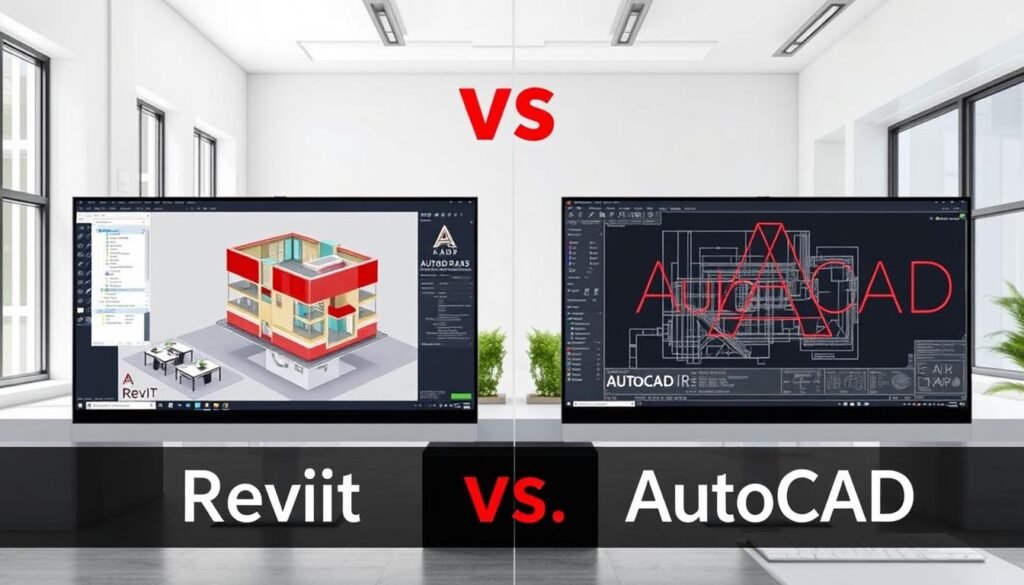5 Signs Your Architecture Office Needs Revit Mentoring Right Now
- 5 Signs Your Architecture Office Needs Revit Mentoring Right Now
- The Evolution of Revit in Modern Architectural Design
- How Revit Has Transformed Project Delivery Methods
- Why Revit Proficiency Is No Longer Optional for Competitive Firms
- The Hidden Costs of Inadequate Revit Implementation
- Opportunity Costs When Teams Struggle with Revit
- Sign #1: Your Projects Consistently Fall Behind Schedule
- Optimizing Model Management Techniques
- Sign #2: Team Members Are Using Inconsistent Revit Standards
- Sign #3: Your Architecture Office Needs Revit Mentoring Right Now When Quality Issues Arise
- Sign #4: Your Team Avoids Using Advanced Revit Features
- Sign #5: High Staff Turnover and Decreased Team Morale
- Measuring the ROI of Professional Revit Mentoring Programs
- How to Select the Right Revit Mentoring Solution for Your Firm
- Conclusion: Investing in Your Firm's Future Through Revit Excellence
- FAQ
- What are the benefits of Revit mentoring for architecture offices?
- How can Revit mentoring address time management issues in my workflow?
- What is the importance of establishing unified BIM execution plans through mentoring?
- How can Revit mentoring help with quality control and clash detection?
- What are the benefits of using advanced Revit features, and how can mentoring help?
- How can Revit mentoring impact employee retention and team morale?
- How do I measure the ROI of a Revit mentoring program?
- What factors should I consider when selecting a Revit mentoring solution?
- Your Attractive Heading
Key Takeaways
Revit has revolutionized the architectural design landscape, transforming the way firms approach project delivery. This Building Information Modeling (BIM) software has become an industry standard, offering numerous benefits that enhance the design process.
A lack of proper architectural training can lead to frustration and decreased productivity. If your team is experiencing difficulties, it may be time to consider a mentoring plan. A well-structured training program can help bridge the skill gap and enhance overall performance.
- Identify signs that indicate the need for Revit mentoring.
- Understand the importance of effective Revit team skills.
- Recognize the benefits of architectural training.
- Improve team productivity with a structured mentoring plan.
- Enhance overall performance with proper training.
The Evolution of Revit in Modern Architectural Design

How Revit Has Transformed Project Delivery Methods
Revit’s impact on project delivery is multifaceted. It enables architects to create detailed, data-rich models that facilitate collaboration across disciplines. This leads to improved coordination and reduced errors during construction. With revit support services, firms can optimize their workflows and maximize the software’s potential.
| Pre-Revit Challenges | Post-Revit Benefits |
|---|---|
| Inconsistent data across teams | Unified data environment |
| Inefficient collaboration | Enhanced collaboration tools |
| Error-prone documentation | Automated documentation |
Why Revit Proficiency Is No Longer Optional for Competitive Firms
In today’s competitive architectural landscape, proficiency in Revit is crucial. Firms that invest in revit support services can stay ahead of the curve, delivering projects more efficiently and effectively. As the industry continues to evolve, Revit expertise will remain a key differentiator for successful firms.
By mastering Revit, architects can focus on design innovation rather than struggling with software limitations. This proficiency not only improves project outcomes but also enhances client satisfaction and firm reputation.
The Hidden Costs of Inadequate Revit Implementation
When Revit implementation falters, the financial and opportunity costs can be substantial. Architecture firms often overlook the long-term implications of inadequate Revit training, leading to inefficient workflows and missed project opportunities.
Inefficient Revit workflows can result in significant financial losses. These losses stem from wasted time, redundant tasks, and the need for rework due to errors. For instance, a team struggling with Revit might spend excessive time on manual data entry or correcting model inconsistencies.
Financial Impact of Inefficient Workflows
Opportunity Costs When Teams Struggle with Revit
When teams struggle with Revit, opportunity costs mount. This includes lost project opportunities and decreased profit margins.
Lost Project Opportunities
Inadequate Revit skills can lead to missed project deadlines, causing firms to lose potential clients and projects. This not only affects current revenue but also damages the firm’s reputation.
Decreased Profit Margins
Inefficient Revit use directly impacts profit margins. By wasting time on unnecessary tasks, firms reduce their overall profitability. A well-implemented Revit system, on the other hand, can streamline processes and enhance productivity.
| Cost Category | Description | Impact |
|---|---|---|
| Financial Losses | Wasted time, redundant tasks, rework due to errors | Reduced Profitability |
| Lost Opportunities | Missed project deadlines, lost clients | Damaged Reputation |
| Decreased Margins | Inefficient use of Revit | Lowered Competitiveness |

By understanding these hidden costs, architecture firms can make informed decisions about investing in Revit training and mentoring, ultimately enhancing their revit team skills and maintaining a competitive edge.
Sign #1: Your Projects Consistently Fall Behind Schedule
Delays in project completion can be a significant concern for architecture firms, potentially indicating a need for Revit mentoring. When projects consistently run behind schedule, it can lead to increased costs, strained client relationships, and a tarnished reputation.
Identifying Revit-Related Bottlenecks in Your Workflow
The first step in addressing delays is to identify the bottlenecks in your Revit workflow. Common issues include complex model management, inefficient documentation processes, and lack of standardization across teams.
How Mentoring Addresses Time Management Issues
Revit mentoring can play a crucial role in improving time management within architecture firms. By providing targeted architectural training, mentoring helps teams optimize their use of Revit, reducing the time spent on repetitive tasks and improving overall project delivery times.
Streamlining Documentation Processes
One key area where mentoring can make a significant impact is in streamlining documentation processes. This includes creating efficient templates, automating repetitive tasks, and implementing best practices for data management.
Optimizing Model Management Techniques
Effective model management is critical for maintaining project timelines. Mentoring can help teams adopt optimized model management techniques, including worksharing, element management, and model auditing.
| Area | Pre-Mentoring | Post-Mentoring |
|---|---|---|
| Documentation Time | 80 hours | 40 hours |
| Model Management Errors | 5 per project | 1 per project |
| Project Delivery Time | 20 weeks | 16 weeks |
By addressing these areas through Revit support services, architecture firms can significantly improve their project delivery times, reducing the likelihood of falling behind schedule.
Sign #2: Team Members Are Using Inconsistent Revit Standards
Inconsistent Revit standards among team members can lead to a myriad of issues in architectural projects. When different team members work with different standards, it can result in a disjointed workflow, affecting overall project efficiency and quality.
The Ripple Effect of Disjointed Modeling Practices
Disjointed modeling practices can have far-reaching consequences, including increased errors, reduced collaboration, and higher costs. When team members use different Revit standards, it can lead to misunderstandings and miscommunications, ultimately affecting project outcomes.
Establishing Unified BIM Execution Plans Through Mentoring
Mentoring can play a crucial role in establishing unified BIM execution plans. By standardizing processes and providing guidance, mentors can help teams work more efficiently and effectively.
Standardizing Family Creation
Standardizing family creation is an essential aspect of unified BIM execution plans. By establishing clear guidelines for family creation, teams can ensure consistency across projects, reducing errors and improving collaboration.
Implementing Consistent Naming Conventions
Consistent naming conventions are vital for maintaining organized and easily accessible project data. By implementing standardized naming conventions, teams can improve data management and reduce the risk of errors.
Through mentoring, teams can develop the skills needed to implement these standards effectively, leading to improved project outcomes and increased efficiency.
Sign #3: Your Architecture Office Needs Revit Mentoring Right Now When Quality Issues Arise
The emergence of quality issues in construction documents is a clear sign that your architecture office requires Revit mentoring. Quality issues can lead to significant problems, including project delays and increased costs. When your team struggles with maintaining high-quality standards, it’s essential to identify the root causes and implement corrective measures.
Recognizing Coordination Errors in Construction Documents
Coordination errors in construction documents can lead to clashes during construction, resulting in costly rework. Revit mentoring can help your team identify and rectify these issues early on. By improving coordination and collaboration among team members, you can ensure that your construction documents are accurate and clash-free.
Implementing Quality Control Protocols with Expert Guidance
Expert guidance is crucial in implementing effective quality control protocols. Revit support services can provide your team with the necessary training and support to enhance their quality control processes. This includes best practices for modeling, annotation, and documentation.
Clash Detection Best Practices
Clash detection is a critical aspect of quality control in Revit. By using clash detection tools, you can identify potential conflicts between different building systems. Best practices include regularly running clash detection tests and addressing identified issues promptly.
Model Auditing Procedures
Model auditing is essential for maintaining the integrity of your Revit models. Regular auditing helps identify and fix errors, ensuring that your models are accurate and reliable. Revit mentoring can teach your team how to perform thorough model audits and maintain high-quality models.
By addressing quality issues through Revit mentoring, your architecture office can improve project outcomes, reduce costs, and enhance team collaboration.
“Investing in Revit mentoring is investing in the quality of your projects.”
Sign #4: Your Team Avoids Using Advanced Revit Features
When architectural teams shy away from advanced Revit features, it can be a sign of underlying skill gaps. Revit’s advanced tools are designed to streamline complex design tasks, improve accuracy, and enhance collaboration. However, if team members are not adequately trained or are hesitant to use these features, the full potential of Revit remains untapped.
Identifying Underutilized Capabilities in Your Current Workflow
The first step in addressing this issue is to identify areas where your team’s Revit skills may be lacking. This involves assessing your current workflow and pinpointing specific features that are not being utilized effectively. Common underutilized capabilities include advanced modeling techniques, sophisticated annotation tools, and data management features.
Breaking Through Feature Resistance with Targeted Training
Once you’ve identified the gaps in your team’s Revit skills, the next step is to provide targeted training to address these deficiencies. This can involve a combination of formal training sessions, on-the-job coaching, and self-paced learning resources. By focusing on the specific areas where your team needs improvement, you can help break down resistance to using advanced Revit features.
Parametric Design Tools
One area where targeted training can have a significant impact is in the use of parametric design tools. These tools allow architects to create complex, data-driven designs that can be easily modified and updated. By mastering parametric design, teams can improve their design flexibility and responsiveness to changing project requirements.
Computational BIM Techniques
Another critical area is computational BIM techniques, which enable the automation of repetitive tasks and the analysis of complex design data. By leveraging these techniques, teams can significantly enhance their productivity and design quality. Training in computational BIM can help teams unlock new levels of efficiency and innovation in their projects.
Sign #5: High Staff Turnover and Decreased Team Morale
Architecture offices often overlook the impact of Revit proficiency on staff turnover and team morale, which can be a costly mistake. When team members struggle with Revit, it can lead to frustration, decreased job satisfaction, and ultimately, high staff turnover.
The Connection Between Technical Frustration and Employee Retention
Technical frustration is a significant factor in employee dissatisfaction. When staff members are not adequately trained in Revit, they can become disheartened with their work, leading to decreased morale and increased turnover rates. Revit support services can play a crucial role in mitigating this issue by providing the necessary training and support.
Building Team Confidence Through Structured Skill Development
Structured skill development programs can significantly boost team confidence. By investing in comprehensive Revit training, architecture offices can empower their staff to work more efficiently and effectively. This not only enhances job satisfaction but also improves overall team performance.
Creating Revit Champions Within Your Team
Identifying and nurturing Revit champions within the team can be a highly effective strategy. These individuals can serve as mentors and role models, helping to disseminate best practices and promote a culture of excellence in Revit usage.
Fostering a Culture of Continuous Learning
Fostering a culture of continuous learning is essential for maintaining high team morale and reducing turnover. By encouraging ongoing education and providing access to Revit support services, architecture offices can demonstrate their commitment to their staff’s growth and success.
In conclusion, high staff turnover and decreased team morale can be critical indicators that an architecture office needs Revit mentoring. By addressing technical frustration and investing in structured skill development, firms can improve employee retention and overall team performance.
Measuring the ROI of Professional Revit Mentoring Programs
Revit mentoring programs offer significant benefits, but measuring their ROI requires a comprehensive approach. To justify the investment in Revit training, firms need to assess both quantifiable and qualitative improvements.
Quantifiable Benefits: Time Savings and Error Reduction
One of the primary advantages of Revit mentoring is the potential for time savings through more efficient workflows. By streamlining processes and reducing the time spent on tasks, teams can complete projects more quickly. Additionally, mentoring helps in error reduction by ensuring that team members understand best practices and can avoid common pitfalls.
- Improved productivity through optimized Revit usage
- Reduced errors leading to fewer costly revisions
- Faster project completion times
Qualitative Improvements: Design Quality and Team Collaboration
Beyond quantifiable benefits, Revit mentoring programs also lead to qualitative improvements in design quality and team collaboration. As teams become more proficient in Revit, they can focus on the creative aspects of their projects, leading to higher quality designs. Moreover, mentoring fosters a collaborative environment where team members can share knowledge and work together more effectively.
Project Case Studies
Examining project case studies is an effective way to measure the impact of Revit mentoring programs. By analyzing specific projects before and after the implementation of mentoring, firms can identify tangible improvements and areas for further development.
Performance Metrics That Matter
To accurately measure ROI, firms should track performance metrics such as project delivery times, error rates, and team satisfaction. These metrics provide a clear picture of how Revit mentoring programs are influencing overall performance.
| Metric | Pre-Mentoring | Post-Mentoring |
|---|---|---|
| Project Delivery Time | 12 weeks | 9 weeks |
| Error Rate | 15% | 5% |
| Team Satisfaction | 70% | 90% |
How to Select the Right Revit Mentoring Solution for Your Firm
Choosing the right Revit mentoring solution is crucial for architectural firms looking to enhance their team’s proficiency. The process involves several key considerations to ensure that the chosen mentoring program aligns with the firm’s specific needs and goals.
In-House vs. External Mentoring Options
Firms must decide whether to implement an in-house mentoring program or seek external expertise. In-house mentoring allows for tailored training within the existing company culture, while external mentoring brings fresh perspectives and specialized knowledge. The choice depends on the firm’s resources, project types, and current skill levels.
Evaluating Mentor Qualifications and Experience
When selecting a Revit mentoring solution, it’s essential to evaluate the qualifications and experience of potential mentors. Look for mentors with a strong background in Revit and architectural training, as well as experience working with firms similar to yours.
Customizing Training Programs to Your Specific Project Types
Different project types require specialized Revit skills. Customizing the training program to focus on the firm’s specific project types ensures that the mentoring is relevant and effective.
Residential-Focused Training
For firms primarily working on residential projects, the training should focus on the specific Revit tools and techniques used in this sector, such as efficient modeling for complex residential designs.
Commercial and Institutional Specialization
Firms engaged in commercial and institutional projects require training that addresses the unique challenges of these larger, more complex projects, including advanced coordination and documentation techniques.
By carefully considering these factors, architectural firms can select a Revit mentoring solution that enhances their team’s capabilities and improves project outcomes.
Conclusion: Investing in Your Firm’s Future Through Revit Excellence
As architecture firms continue to navigate the complexities of modern design and project delivery, investing in Revit excellence has become a critical component of long-term success. By enhancing revit team skills through targeted architectural training and revit support services, firms can significantly improve project outcomes and drive business growth.
The benefits of Revit mentoring, as discussed throughout this article, are multifaceted. From improving time management and reducing errors to enhancing design quality and team collaboration, the right training and support can transform a firm’s capabilities. By investing in Revit mentoring programs, firms can ensure that their teams are equipped with the skills needed to stay competitive in a rapidly evolving industry.
Ultimately, the decision to invest in Revit excellence is a strategic one, positioning firms for future success and enabling them to deliver high-quality projects efficiently and effectively. With the right revit support services and architectural training in place, architecture firms can confidently navigate the challenges of modern design and project delivery, driving growth and success in the process.

